Grand Canyon National Park recently announced that the park will be temporarily closing to overnight hotel stays starting on December...
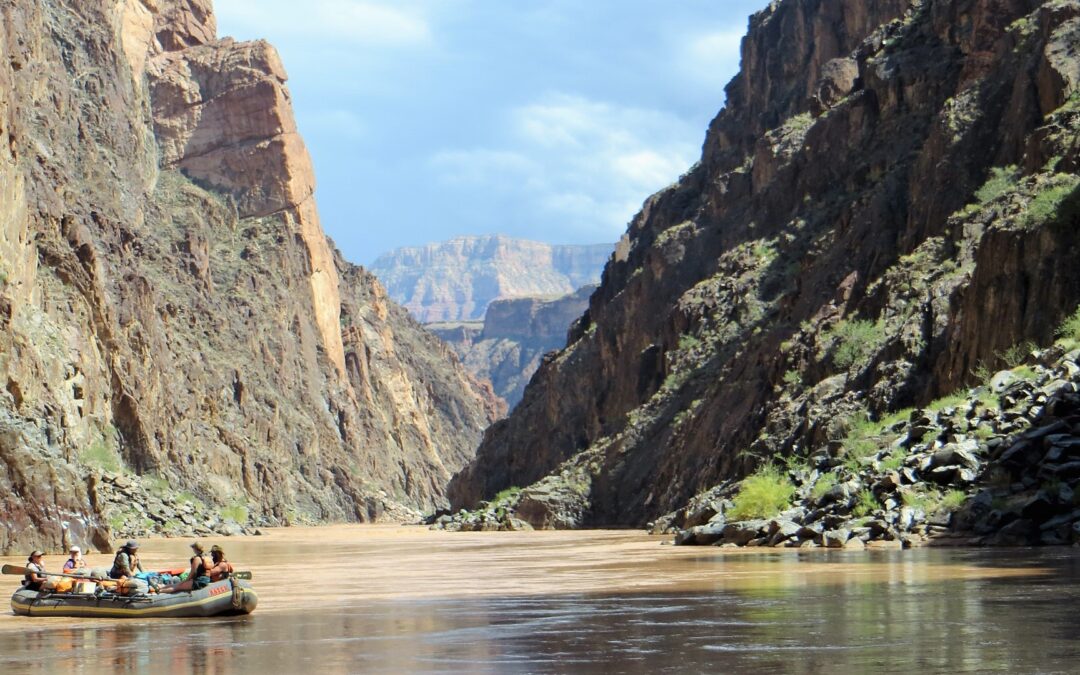
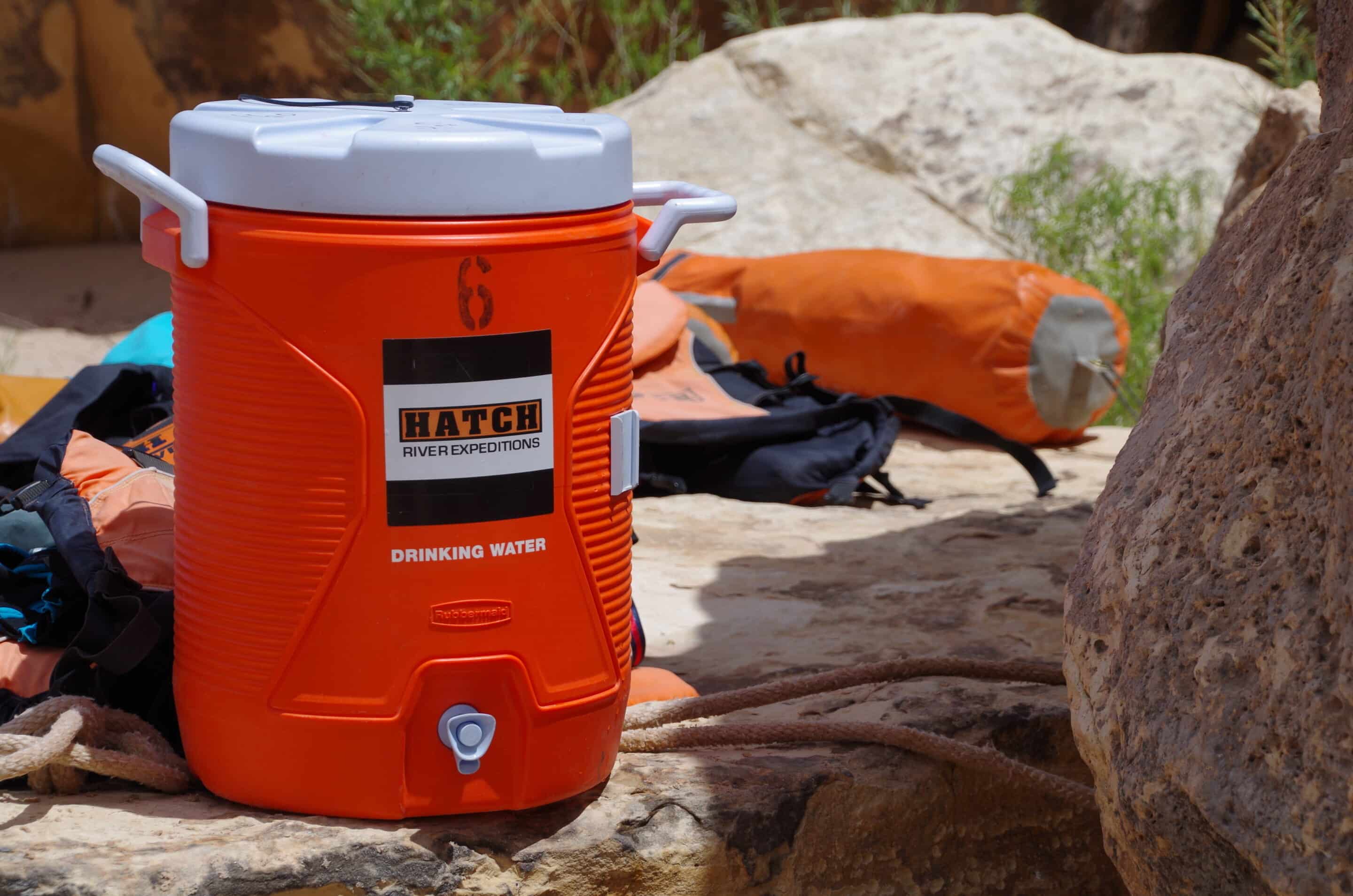
“Drink more water.”
You’ve probably heard this advice so much that you’re sick of it! But the reason this phrase makes its way into all the health and self-care checklists right between “get enough sleep” and “exercise regularly” is that water is vital to maintaining an adequately functioning body and mind. Nowhere is this more important than on an active vacation in a remote and arid outdoor setting. Don’t let the Colorado River fool you—you’re still in a desert in the middle of summer. It’s important to hydrate accordingly.
Here are Hatch’s top 9 tips for maintaining proper hydration:
They say if you feel thirsty you are already dehydrated. While we can’t speak to the science of that exact statement, we do know that many of our guests are not used to drinking enough to keep up with their thirst in the desert heat. Don’t save your liquid consumption for pit stops, hikes, or meals. Drink all day long to ensure that you stay properly hydrated. And, if you do begin to feel thirsty take it as a sign that it’s time to have a drink.
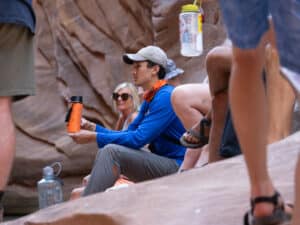
The trick to drinking enough fluid is accessibility. In the Hatch office, each of our desks is adorned with a water bottle because we’ve found that we stay much better hydrated that way. On the river, you should be doing the same! Bring a sturdy carabiner that you can use to clip your water bottle near you wherever you are on the raft so that it’s always handy. Carry water or Gatorade/lemonade on all of your side hikes. Wherever you are, you should have a hydrating liquid close at hand.
Larger water bottles hold more water. Seems obvious, right? Too small and you’ll feel like you’re constantly passing your bottle back to the coolers (unless you just give up altogether). Small bottles also might not carry enough for what you’ll need on the side hikes. Don’t get a bottle that’s too large, though—you’ll find you tire of lugging a giant heavy bottle everywhere you go. The sweet spot is right around 1 liter (or about the size of a standard Nalgene).
One big element of proper hydration is keeping the sodium levels in your blood where they should be. If you drink only water all day long and a lot of it, you may find yourself experiencing symptoms of low blood sodium, or hyponatremia. These might include headache, nausea, fatigue, irritability, or muscle weakness or cramps. To avoid becoming hyponatremic, balance your water intake with electrolyte-filled drinks. Hatch provides Gatorade or lemonade all day every day, so for every second or third bottle fill, try going for one of those drinks instead of water. And make sure to take advantage of the salty snacks we provide—pretzels, nuts, and pickled veggie appetizers will keep you in the clear.
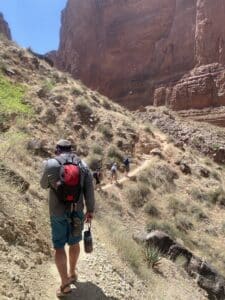
You may find that you need to monitor and respond to your body’s signs and signals more on the river than you do in your daily life. Pay attention to thirst, headaches, fatigue, and other symptoms that could indicate dehydration or hyponatremia. And, although it sounds weird, pay attention to your pee! Drinking enough means you’ll be producing urine, so you’ll probably need to make a pit stop every hour and a half or two. Don’t risk under-hydrating because you’re afraid to ask the guides for a stop. While you’re there, pay attention to the color of your urine—it should be pale yellow. If it’s too dark, you may not be hydrating enough, and if it’s clear, you need to get some more sodium in your system.
If you worry you’ll tire of the same old water and Gatorade day after day, bring along some flavor mix-ins or cans of sparkling water to make it more interesting. Even other beverages like juice and soda are mostly water. If they will help you stay properly hydrated, we are all about the flavored drinks.
Beer, wine, and other alcoholic beverages do contain water, but they aren’t good for hydration. Alcohol is a diuretic, which means that it actually causes you to lose more water than you take in. This could increase your dehydration even though you are drinking. This is a vacation, so we expect most guests will be drinking at least a little alcohol, but just remember to keep hydrating while you do. If you do get carried away, remember that hangovers are also the product of dehydration, so drinking more hydrating fluids the next day will help ease your symptoms.
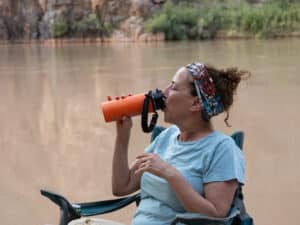
If you’re not drinking enough water during your daily life, you’ll have a harder time staying hydrated once you get on the river. We suggest pre-conditioning your body for our hikes—why not pre-condition your brain to be in the habit of drinking when you’re thirsty? Bring a water bottle with you to work or on your daily errands, and at the first sign of thirst, take a sip. Being properly hydrated in your daily life has benefits to your physical and mental health, and it will make sure you start out your trip in the best possible condition.
Sweat is the body’s natural mechanism for staying cool, and it relies on a properly hydrated body to work. As your body heats up, your sweat glands release liquid that evaporates and cools you off. This works well in most conditions, but in extreme heat, your sweat can evaporate so quickly that you hardly notice a change and end up unexpectedly dehydrated. One way to temper your sweat loss is to keep your body cooler overall. Wearing lightweight, light-colored, sun-protective clothing like a long-sleeved cotton shirt, for example, can help keep your overall body temperature lower. (Plus it will keep you from getting sunburned!) Sun hats and bandanas are great for this, too. And, for added cooling, try dipping your shirt, hat, or bandana in the cool water—the water will evaporate over time just like your sweat helping to bring your overall temperature down. Sweat is also a good way to monitor your physical condition—if you’re hot but not sweating, check yourself for other symptoms like dizziness, nausea, or confusion, as these could indicate that you are experiencing heat stroke.
Reference: https://www.nps.gov/grca/planyourvisit/hike-smart.htm
https://www.healthline.com/nutrition/7-health-benefits-of-water
Want to plan a Grand Canyon rafting trip? We’ve compiled some helpful blogs to make booking your trip a whole lot easier!
The question we hear most often is: “What do I need in my day bag today?” The easiest answer? Be like a Boy Scout: Always be prepared.
One of the most common packing questions we get is: “Do I need to bring bug spray for my river trip?” Our answer is usually no- here’s why…